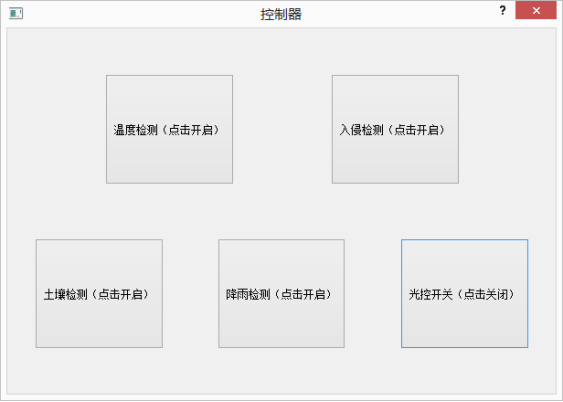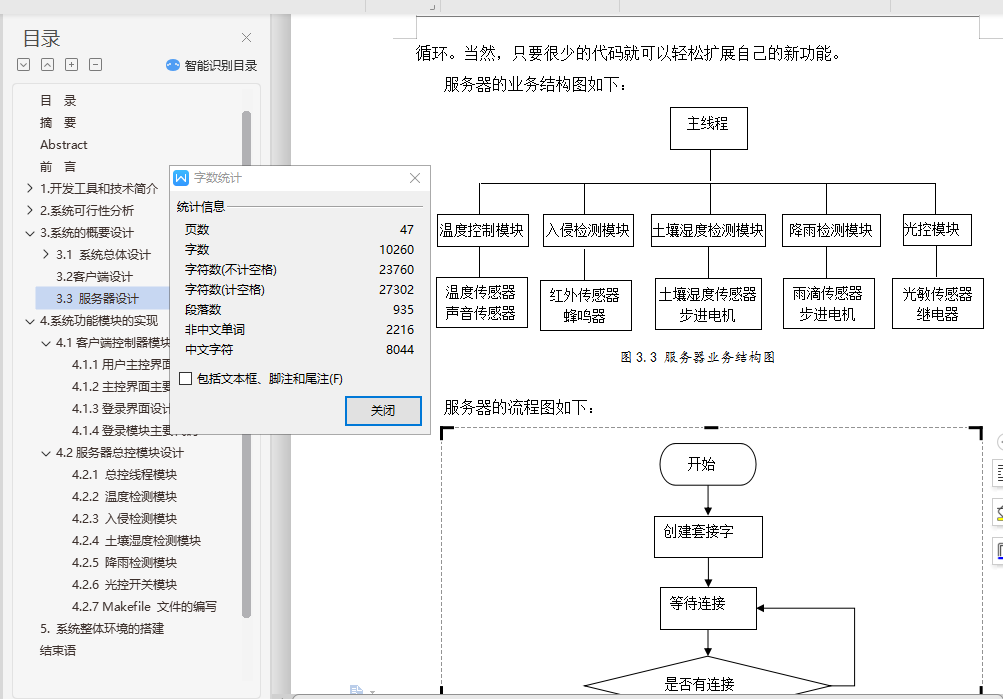摘 要
智能家居系统,着重于实现日常生活的智能化,分别以室内温度、土壤湿度、雨滴感应等模块的形式实现。系统以开发板为控制中心完成对每个传感器模块的检测、控制,用户可以按照自己的意愿实现智能化的操作。可以为用户的生活增添乐趣、提供方便,主要帮助用户自动完成一些琐碎的工作,以及提供一些日常提醒功能,为用户提供智能化的服务。
在开发时采用树莓派2代板(ARM Cortex-A7)作为开发平台,使用Debian Linux操作系统作为支撑,运用C语言跟Python语言共同完成流程控制,合理利用了一些开源软件加入设计,然后打包部署到开发板,最终完成系统设计。
关键词:智能家居;树莓派;ARM;Linux
Abstract
Smart Home Subsystem, focusing on achieving intelligent daily life. Respectively, in the form of indoor temperature, soil moisture, rain sensor and other modules to achieve. System use development board as the control center to complete the detection and control of each sensor module, the user can achieve intelligent follow their wishes. It can be added to user’s enjoyment of life, and provide convenient to everyone. The system mainly to help users automate some trivial work, as well as provide some daily remainders, and to provide users with intelligent services.
Using the second generation Raspberry Pi board (ARM Cortex-A7) in the development as a development platform, using Debian Linux operating system as a support, the use of C language and Python language together with the completion of the process control, rational use of a number of open source software to join the design, package the deployment to the development board to complete the system design finally.
Key words: Smart home; Raspberry Pi; ARM; Linux
目 录
摘 要 I
Abstract II
前 言 1
1. 开发工具和技术简介 1
1.1 硬件工具简介 1
1.1.1树莓派2代B板简介 1
1.1.2 其他硬件模块 1
1.2 软件工具介绍 3
1.2.1 Qt 3
1.2.2 Espeak TTS 3
1.2.3 WiringPi 3
1.2.4 PuTTY 5
1.2.5 Win32 Disk Imager 5
1.2.6 SDFormatter4exe 5
1.3 系统环境设置 5
1.3.1 系统的下载和烧写 5
1.3.2 系统的启动与连接 5
1.3.3 树莓派的基本配置 7
1.3.4 树莓派的网络配置 7
1.4 系统硬件连接图 8
2.系统可行性分析 9
2.1 市场可行性分析 9
2.2 技术可行性分析 10
2.3 经济可行性分析 10
3. 系统的概要设计 11
3.1 系统总体设计 11
3.1.1 总体设计要求 11
3.1.2 系统的构成与功能 11
3.2 客户端设计 11
3.3 服务器设计 12
4. 系统功能模块的实现 14
4.1客户端控制器模块 14
4.1.1用户主控界面设计 14
4.1.2主控界面主要代码 14
4.1.3登录界面设计 18
4.1.4登录模块主要代码 18
4.2服务器总控模块设计 21
4.2.1 总控线程模块 21
4.2.2 温度检测模块 27
4.2.3 入侵检测模块 30
4.2.4 土壤湿度检测模块 31
4.2.5 降雨检测模块 34
4.2.6 光控开关模块 35
4.2.7 Makefile 文件的编写 36
5. 系统整体环境的搭建 38
结束语 39
参考文献 40
致 谢 41





